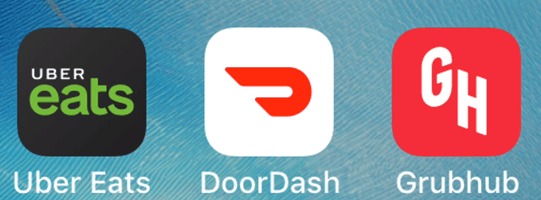
Before the pandemic, it was very common for me to go dine in a restaurant than order food online. I have realized the pandemic got me into a habit of ordering food online or picking up food from any restaurant. Even though it’s easier to order food online, it has its consequences. Sometimes it is out of obligations and most of the time me being laid back. It’s much easier to order food while I’m at work rather than prepare a meal at home and bring it to work. Well, everything comes with its own cost. I have realized I spend more than I should. SO, I decided to work on the data on how often I order food either delivery or pick up as this might help me to control my budget moving forward.
Project Goal
The past 3 months of data from various apps on my phone like UberEats, Door Dash, and Grub Hub have been manually collected and arranged on an Excel sheet. The data will be used to see which day from a week has more orders and overall when the amount spent is seemingly high and to know the obligations if possible. Perhaps this will help me analyze which day of the week I spend more and control the budget?
Research questions
About 70 days (Jan 1st 2022 to March 13th 2022 ) of data have been used to identify the average weekday when the orders are potentially high. This brings a question to mind where there are changes in orders due to various needs during each week. Throughout the analysis, it will be seen whether significant obligations change the average money spent each day. The project will explore which days orders are mostly picked up rather than delivered to the location of order.
Audience
The project tells a story of personal data. Here, the strategies used to tell the story is highlighting the relationship between the number of orders of food, type of method of delivery, money spent, and significant obligations that has an impact on the overall orders of food. One graph will visualize the average orders per day of the week on average, one shows a dual axis where the correlation of orders and significant obligations are presented. Each graph has its own story that will interact with the viewers
Data Source
The data from January 1st 2022 till March 13th 2022 is manually collected from Apps on my phone like Uber Eats, Door Dash, Grub Hub, etc of the last approximately 70days and gathered on Excel Sheet. On the data, there is a date column, number of orders, type of order delivered, money spent, and the obligations if any organized. The data is to track the money spent on food orders based on either obligations or any luxury. Mostly the data is collected from Uber Eats as I use this often.
Visualization
The first visualization created is a scattered chart that shows the average order of the past 70days by day of the week. On average the orders made on Monday or Tuesday is displayed by the logo of food. As it is shown on Wednesday the orders are more comparatively. Next during the analysis, it will be seen if obligations where more on Wednesday due to which the numbers of order might have increased.
Orders in the last 3 months
Below is a bar chart that separates the type of orders whether delivered or picked up. Again on Wednesday there were more food deliveries made on average. When I tracked down the times and my past orders based on this record. I found out there were 3 occasions there fell on a Wednesday. Starting from my birthday week on January which was on a Wednesday, a get-together held at my friend’s house was also held on a Wednesday. Saturdays have most picked up order days since I stay at home and its much easier to pick up the food and save some money on delivery charges.
The third chart is my personal favorite, a dual combination of bar chart and line graph. On this chart a few stories are being told. The line shows the amount of money being spend on average per week day and the bar shows the obligations. Each bar has two different colors which is display the type of order either delivered or picked up. On average Sunday, Monday and Tuesday orders are delivered so far also it has least obligations and number of orders.
The last visualization is a pie chart. Even though the data is limited and I’m working with few variables and the exact proportions are not shown here, I think it is interesting to see the obligations aligned with the average of days on a week. The colors and a small annotation on the chart for the least to most number obligations give a story for the audience to understand.
Next Step
Next time I would like to have designated explanations for my obligations it could be a party, guests coming over, or a birthday. Since there were limited data, I was only able to track the usage of App orders. In the future, I would like to maintain data set that has dine-in records and also an order that was placed directly to a restaurant over the phone without an App. After the analysis of the personal data, I do realize that a lot of my money is being spent on food. Perhaps these records can motivate me to start cooking rather than spending it on foods from restaurants and save up.

